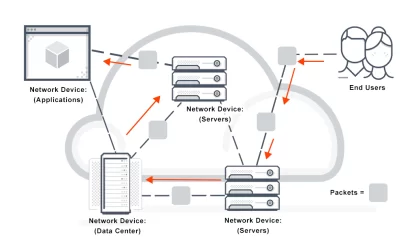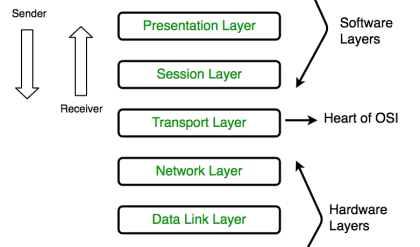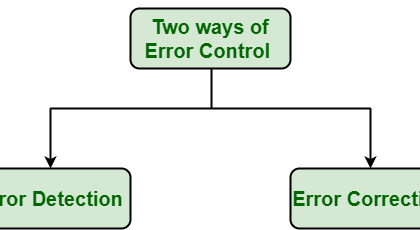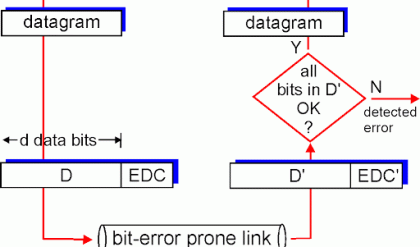What is Satellite Communication?
Satellite communication is the method of transporting information from one place to another using a communication satellite in orbit around the Earth. Watching the English Premier League every weekend with your friends would have been impossible without this. A communication satellite is an artificial satellite that transmits the signal via a transponder by creating a channel between the transmitter and the receiver located at different locations on the Earth.
Telephone, radio, television, internet, and military applications use satellite communications. Believe it or not, more than 2000 artificial satellites are hurtling around in space right above your heads.
Satellite Communication Block Diagram

Need for Satellite Communication
We know that there are different ways to communicate and the propagation of these waves can take place in different ways. Ground wave propagation and skywave propagation are the two ways in which communication took place for a certain distance. The maximum distance covered by them is 1500 km and this was overcome by the introduction of satellite communication.
How Satellite Communications Work?
The communication satellites are similar to the space mirrors that help us in bouncing the signals such as radio, internet data, and television from one side of the earth to another. There are three stages that are involved which explain the working of satellite communications. These are:
![]() Uplink
Uplink
![]() Transponders
Transponders
![]() Downlink
Downlink
Let’s consider an example of signals from a television. In the first stage, the signal from the television broadcast on the other side of the earth is first beamed up to the satellite from the ground station on the earth. This process is known as uplink.
The second stage involves transponders such as radio receivers, amplifiers, and transmitters. These transponders are used for boosting the incoming signal and to change their frequency so that the outgoing signals are not altered. Depending on the incoming signal sources, the transponders vary.
The final stage involves a downlink in which the data is sent to the other end of the receiver on the earth. It is important to understand that usually there is one uplink and multiple downlinks.
Satellite Communications in India
It’s interesting to know that the Indian National Satellite (INSAT) system is one of the largest domestic communication systems that is placed in the geo-stational orbit. There are more than 200 transponders in the INSAT system and are used for various purposes such as telecommunications, weather forecasting, television broadcasting, disaster warning, search and rescue operations, and satellite newsgathering.
Below is the list of communication satellites along with their applications:
| Satellite name | Launch date | Application |
| GSAT-30 | Jan 17, 2020 | Communication |
| GSAT-31 | Feb 06, 2020 | Communication |
| GSAT-15 | Nov 11, 2015 | Communication and navigation |
| GSAT-10 | Sep 29, 2012 | Communication and navigation |
| INSAT-3A | Apr 10, 2003 | Communication and climate and environment |
| KALPANA-1 | Sep 12, 2002 | Communication and climate and environment |
The Space Debris Consisting Of Satellites And Other Junk Revolving Around The Planet
The need for satellite communication becomes evident when we want to transmit the signal to far off places, where the Earth’s curvature comes into play. This obstruction is overcome by putting communication satellites in space to transmit the signals across the curvature. Satellite communication uses two types of artificial satellites to transmit the signals:
- Passive Satellites: If you put a hydrogen balloon that has a metallic coating over it, up in the air, it technically becomes a passive satellite. Such a balloon can reflect microwaves signals from one place to another. The passive satellites in space are similar. These satellites just reflect the signal back towards the Earth without amplification. Since the satellite orbit height can range from 2000 to 35786 km, attenuation due to the atmosphere also comes into play and due to this, the received signal is often very weak.
- Active Satellites: Active Satellites, unlike passive satellites, amplify the transmitted signals before re-transmitting it back to Earth, ensuring excellent signal strength. Passive satellites were the earliest communication satellite but now almost all the new ones are active satellites.
To avoid mixing up and interference of signals, every user is allocated a specific frequency for transmitting it. The International Telecommunication Union does this frequency allocation. Geosynchronous satellites are of note here. Geostationary orbit is present at the height of 35786 km above Earth’s surface. If you can spot such a satellite with a telescope from Earth, it will appear stationary to you. The orbital period of the satellite and the rotational rate of the Earth is in sync.
Have A Look At This GIF About Geostationary Orbits
These were some typical orbits. Apart from these we also have orbits that address particular problems. The Russians faced one such issue. GEO satellites worked perfectly for the equatorial regions, but it had a very weak coverage near the Poles. To address this problem, the Russians designed an orbit with a very high inclination. The inclination is the angle between the satellite’s orbit and the equator. This orbit was called the Molniya orbit. The orbit had excellent coverage of the North Pole for a short time. Molniya had a period of 24 hours, but out of that, it would be close to Earth only for 6-9 hours. Russia launched some more satellites in the same orbit and soon they had uninterrupted coverage.

Satellite Communication Services
There are two categories in which the satellite communication services can be classified:
- One-way satellite communication
- Two- way satellite communication
One-way satellite communication
In one-way satellite communication, the communication usually takes place between either one or multiple earth stations through the help of a satellite.
The communication takes place between the transmitter on the first earth satellite to the receiver which is the second earth satellite. The transmission of the signal is unidirectional. Some common one-way satellite communication is:
- Position location services are provided by the radio
- Tracking is a part of space operations services
- Internet services take place with broadcasting satellites
Following is the figure which explains the one-way satellite communication:
Two-way Satellite Communication
In two-way satellite communication, the information is exchanged between any two earth stations. It can be said that there is a point to point connectivity.
The signal is transmitted from the first earth station to the second earth station such that there are two uplinks and two downlinks happening between the earth stations and the satellite.
Following is the figure of the two-way satellite communication:
Advantages of Satellite Communication
The following are the advantages of satellite communication:
v Installments of circuits are easy.
v The elasticity of these circuits is excellent.
v With the help of satellite communication, every corner of the earth can be covered.
v The user fully controls the network.
Disadvantages of Satellite Communication
The following are the disadvantages of satellite communication:
Ø Initial expenditure is expensive.
Ø There are chances of blockage of frequencies.
Ø Propagation and interference.
Applications of Satellite Communication
![]() Telephone
Telephone
![]() Television
Television
![]() Digital cinema
Digital cinema
![]() Radio broadcasting
Radio broadcasting
![]() Amateur radio
Amateur radio
![]() Internet access
Internet access
![]() Military
Military
![]() Disaster Management
Disaster Management





